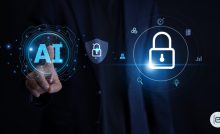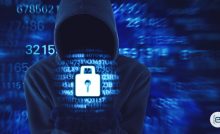The New Normal COVID-19 Office Security


With continued WFH policies and multiplied COVID-19 scams and threats, the importance of good cyber security stands out. Indeed, with a workforce that is highly dependent on digital services for the foreseeable future, the new normal COVID-19 office security is necessarily stronger, more vigilant, and more dispersed.
Yet, a lot of questions remain unanswered. For example, will behavioral surveillance be part of the new normal? As organizations plan to implement contact tracing, privacy advocates voice their concerns. Given the uncertainty, we expect to see these non-intrusive measures with clearly defined benefits coming to the new normal.
Thermal Cameras for Passive Temperature Checking
The advantages of temperature detection for a business COVID-19 strategy include early discovery and reporting leading to early isolation and treatment.
Advanced temperature detection technology is not a substitute for medical grade FDA approved thermometers. The advantage of an advanced thermal camera system is that it can pick out personnel with abnormal body temperatures in heavy traffic areas to be assessed later by a professional with medically approved equipment.
These systems use an HD video camera and thermal camera side by side looking at the same field of view. The resulting video and metadata output, when combined with advanced artificial intelligence, gives sensible temperature data on multiple objects simultaneously.
Some systems employ facial detection technology paired with a face database and a high temperature detection alarm. They can identify up to 16 targets with a temperature accuracy of .54° F and come with an easy to use interface.


In-office Security Cameras
Also likely to become more common, in-office security cameras provide a video record of events. They function as a tool to answer concerns about what happened if a COVID-19 behavioral complaint surfaces. The societal resistance to surveillance will likely be counter-balanced by the desire to maintain a safe work environment.
Plexiglas Barriers
Plexiglas® extruded acrylic sheets promote both worker and consumer safety to help control the spread of the virus. Sneeze guards made from Plexiglas make sense. So, it is logical to see their use extended in the office to create barriers between closely seated workers. We’ll see them in other areas to promote social distancing.
Health Questions
The CDC recently issued guidance recommending that employers actively encourage sick employees to stay home. Interpreting this guidance, the EEOC confirmed that the rules of the ADA and the Rehabilitation Act continue to apply but do not prevent employers from following guidelines from the CDC and other public health authorities regarding COVID-19.
Per the EEOC’s guidance, employers may ask employees who report feeling ill at work, or who call in sick, questions about their symptoms to determine if they may have COVID-19. In addition, they may require employees to stay home if they have COVID-19 symptoms, screen applicants for symptoms of COVID-19, delay the start date or withdraw the offer of an applicant with symptoms.
Thus, employers may find it necessary to ask employees about their symptoms. They might require notification of high body temperatures, and request disclosure of recent proximity to individuals who have tested positive for COVID-19. In doing so, they must be mindful to do it consistently and avoid discriminatory use of the results.
To simplify the process and avoid collecting unnecessary information, employers may simply ask employees to stay home if they show certain symptoms, rather than asking them about the specific symptoms they have.
Work from Home Security
The WFH new normal creates multiple security challenges that must be addressed. From simple provisioning issues like shredders for employees handling sensitive documents to updated incident response plans, new circumstances demand new security responses.
For example, the company’s business continuity plan should be updated to address new fail-over and backup procedures. Also, the difficulty of securing and verifying credentials in a remote environment will encourage the use of multifactor authentication.
In addition, with less physical oversight of employees, organizations may need to focus more on user activity. Access logs and user behavior analysis come to mind. Increased threats require increased employee education. And, employees also need to know how to report security risks or threats through all the currently used communication channels (in addition to email).
Achieve the New Normal COVID-19 Office Security
Businesses of all sizes struggle to adapt to rapidly changing office security conditions without much preparation. Navigating security challenges in the new normal COVID-19 office security environment requires courage and expert assistance. Contact eMazzanti Technologies today to prioritize and implement new normal security best practices for your organization.
Recent Posts
Step Up Your Threat Response With Security Copilot
As we move deeper into 2025, you are probably focusing on ways to expand your…
Watch Out for the Cyber Security Menace
As we move deeper into 2025, you are probably focusing on ways to expand your…
The Rise of AI Agents: Simplifying Tasks and Connecting Technologies
Introducing eCare Bot: Your Intelligent IT Support Assistant In today's fast-paced world, the emergence of…
Server Simplified
At eMazzanti Technologies, we recognize that stable, effective, and expandable servers are essential to the seamless operation of enterprises. For this reason, we collaborate with Hewlett Packard Enterprise (HPE) to offer our clients the best server solutions possible, customized to meet their unique requirements. HPE servers provide the performance and flexibility required for small and big businesses to manage data, support apps, and manage workloads with ease. Customers may choose the best HPE servers for their organization with the assistance of our team of specialists. We take the time to comprehend the particular needs of every client, including those related to processing speed, storage capacity, and security features. Whether our clients require a general-purpose ProLiant server or a…
How to Make Your AI Copy Sound Authentic: Writing Like a Human, Not a Machine
AI writing tools have become popular for creating content quickly. But many readers can spot…
Data Analytics for Old-School Business Owners: Turning Dusty Ledgers into Gold Mines
Data analytics is changing the game for businesses of all types, including old-school industries that…


